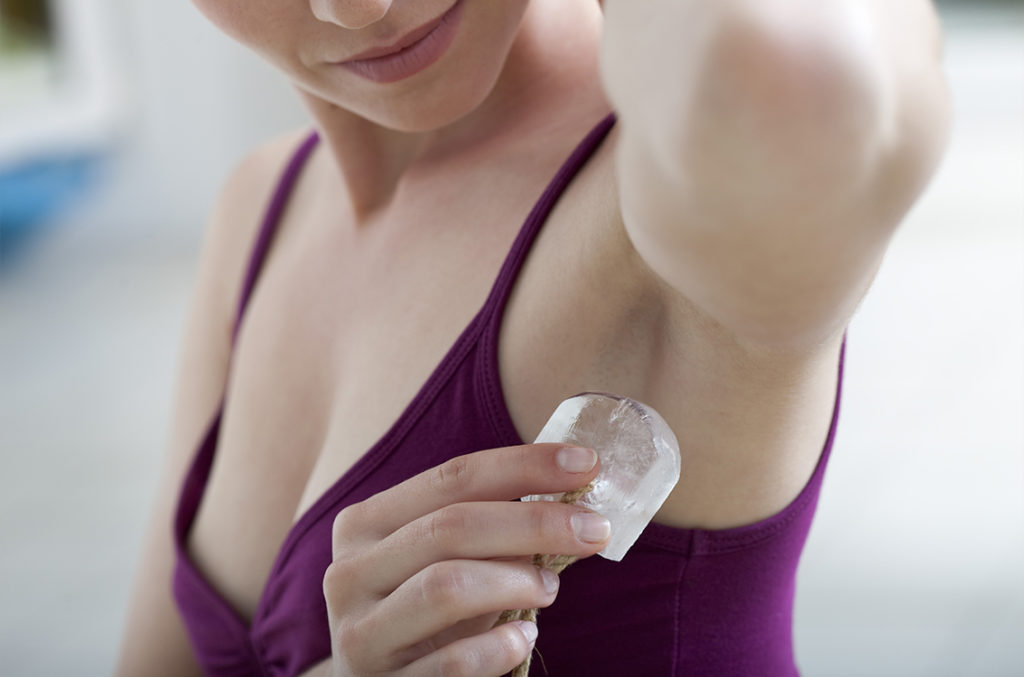Alum stone deodorant: uses and benefits
Are you familiar with the benefits of alum stone? This mineral has different properties for use in cosmetics. Discover its uses and how to use it.

Alum stone is composed of one single mineral, potassium sulphate-based salt (alunite). It is a 100% natural component found in nature, above all, in fields in Syria and the Middle East. It has deodorant, antibacterial, astringent and softening properties. It has been used since the olden days both in cosmetics, and to clean fabrics. But, is it really efficient?

What is alum and what is it used for?
There are two different versions, natural and synthetic:
-
The synthetic alum stone is called ammonium alum, and it is manufactured with ammonium salt.
-
Natural alum stone is called potassium alum.
Both the natural and synthetic versions contain aluminium. If used as a deodorant, the product is easily eliminated through sweat or when we have a shower.
It works like this: when dry, alum stones remain neutral, but in contact with water or damp skin – caused by sweat – and in an acid medium (such as sweat), the alum dissolves and releases aluminium ions. Thus, the pores are blocked, achieving the effect of an antiperspirant.
The alum stone must be slightly moistened before using it. Then, it must be applied to the areas of the skin that you want to treat: underarms, feet, face, etc. The skin must have been cleansed and dried well before applying the stone, waiting until this has dissolved when it comes into contact with the water. After use, we must dry it and clean it perfectly before putting it away.
But alum stones are less effective than an industrial antiperspirant: they only reduce perspiration by 30%, and although they help to control odour, they do not eliminate it totally.

Properties of alum stone
In the olden days, alum stone was used as:
-
Body deodorant
-
Wound and irritation healing agent
-
Soothing after shave balm
-
To relieve insect bites
-
To clean clothes
-
To treat ulcers and small wounds in the mouth, due to its antiseptic properties.
It is currently used for its bactericide and antiperspirant capacity, as a body deodorant.
What do you think about?
Share comments, opinions and tricks with the Community







